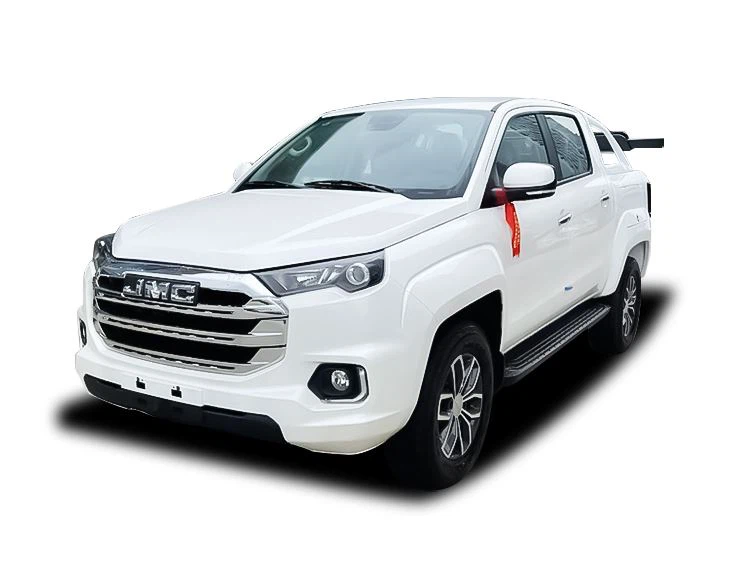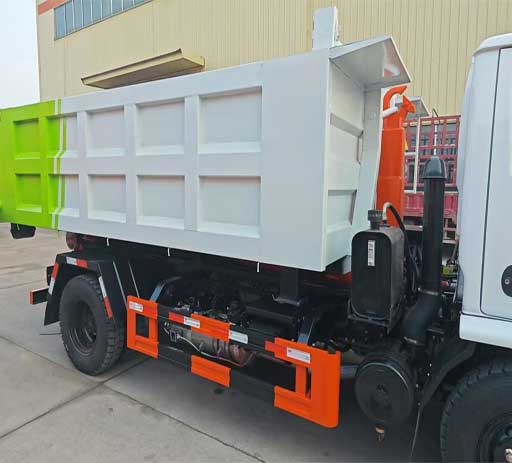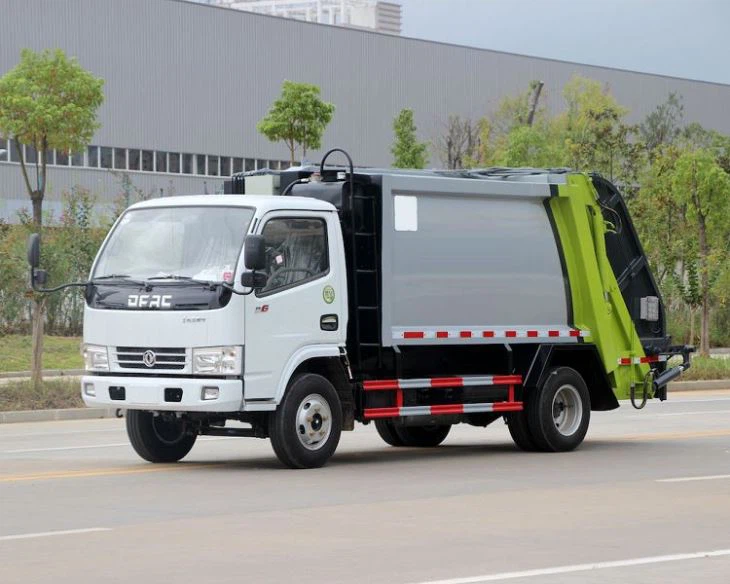Truck Front End Loader: A Comprehensive Guide

Introduction
The truck front end loader, an essential piece of equipment in construction and agriculture, plays a vital role in enhancing productivity. These versatile machines are designed for lifting and transporting materials, making them indispensable for various tasks from moving gravel to loading trucks. This article offers an in-depth look at truck front end loaders, including their features, types, applications, and maintenance tips. By understanding these aspects, operators can maximize efficiency and ensure optimal performance in their projects.
What is a Truck Front End Loader?
A truck front end loader is a heavy construction machine equipped with a front-mounted bucket that can be used to scoop, lift, and move materials. It’s typically mounted on a truck chassis, enabling it to travel over different terrains effectively. Truck front end loaders are highly versatile, making them suitable for a variety of tasks such as lifting dirt, loading trucks, clearing debris, and feeding materials into other machines.
Key Components of a Truck Front End Loader
Understanding the essential components of a truck front end loader can help operators better comprehend how to use and maintain them effectively. Below are the key components:
1. The Bucket
The bucket is arguably the most important component of a front end loader. It can come in various shapes and sizes, depending on the intended use. Common bucket types include:
- General Purpose Buckets: Suitable for a variety of tasks.
- Material Handling Buckets: Designed for moving loose materials like dirt or gravel.
- High-Volume Buckets: Ideal for maximizing load capacity.
2. Hydraulic System
A hydraulic system provides the necessary power to lift heavy loads. Comprised of hydraulic cylinders and fluid, this system makes lifting and tilting the bucket easier and allows for precise control when maneuvering materials.
3. Engine
The engine powers the loader, and it can vary from diesel to electric options, depending on the model. The engine’s performance directly impacts the loader’s efficiency and load capacity.
4. Chassis
The chassis is the base frame of the loader, connecting all components. It must be robust enough to support heavy loads and withstand rigorous use.
5. Tires
Tires play a crucial role in maneuverability and traction. Different types of tires are available, catering to varied terrains and working conditions.

Types of Truck Front End Loaders
Truck front end loaders come in different types, each designed for specific applications. Here are some common types:
1. Wheel Loaders
Wheel loaders are the most common type of front end loader. They are equipped with wheels, making them suitable for paved surfaces and rough terrains. Their versatility allows for various attachments, including forks, plows, and hammers.
2. Skid Steer Loaders
Skid steer loaders are compact and offer excellent maneuverability in confined spaces. They can be fitted with various attachments and are ideal for landscaping, construction, and snow removal.
3. Backhoe Loaders

These machines combine a front end loader with a backhoe, making them highly versatile. They can dig, lift, and move materials, making them suitable for construction projects that require multiple functions.
Applications of Truck Front End Loaders
Truck front end loaders serve multiple industries, including construction, agriculture, and waste management. Here are some practical examples of their applications:
1. Construction
In the construction sector, front end loaders are used for:
- Moving dirt and debris
- Loading materials into trucks
- Clearing job sites
2. Agriculture
Farmers utilize truck front end loaders for:
- Lifting and transporting hay bales
- Feeding livestock
- Loading soil and fertilizers
3. Waste Management
The waste management industry uses front end loaders for:
- Loading waste into trucks
- Landfill operations
- Recycling material handling
Choosing the Right Truck Front End Loader
Selecting the appropriate front end loader depends on several factors. Here are some critical considerations:
1. Operating Environment
Consider the type of terrain where the loader will operate—paved, rough, or uneven ground impacts which loader type is best suited.
2. Load Capacity
Evaluate the maximum load the front end loader must handle to ensure it meets your requirements and remains efficient.
3. Attachments
Determine if specific attachments are needed for specialized tasks, such as forks for lifting pallets or buckets for different materials.
Maintenance Tips for Truck Front End Loaders
Regular maintenance is crucial to the longevity and performance of truck front end loaders. Here are practical tips for maintenance:
1. Regular Inspections
Frequently inspect the loader for any signs of wear or damage, especially hydraulic hoses, tires, and the bucket.
2. Fluid Checks
Monitor fluid levels such as hydraulic fluid, engine oil, and coolant to ensure smooth operation and performance.
3. Cleaning
Keep the loader clean to prevent dirt accumulation, which can affect its performance and visibility.
4. Operator Training
Ensure that operators are adequately trained in using the loader efficiently and safely to prevent accidents and machinery damage.
Innovations in Truck Front End Loader Technology
The trucking industry continues to evolve with new technologies that enhance the performance and efficiency of front end loaders:
1. Telematics
Telematics systems allow operators to monitor machine performance and diagnostics in real-time, improving operational efficiency.
2. Autonomous Operation
Some manufacturers are exploring autonomous operation capabilities, allowing loaders to perform tasks under minimal supervision, leading to increased productivity.
3. Electric and Hybrid Options
With the environmental push, electric and hybrid models are being developed, promising lower emissions and better fuel efficiency.
Cost Factors of Truck Front End Loaders
The cost to purchase or lease a front end loader can vary widely based on several factors:
1. Brand and Model
Different manufacturers offer various models, with prices reflecting features, technology, and reputation.
2. Size
Loader size directly impacts price; larger models designed for more substantial loads typically come at a higher cost.
3. New vs. Used

New loaders offer the latest technology and warranty but are expensive. Used loaders can save costs but might require more maintenance.
Cost Comparison Table
| Category | New Loader Price | Used Loader Price |
|---|---|---|
| Small Size | $30,000 – $50,000 | $15,000 – $30,000 |
| Medium Size | $50,000 – $100,000 | $25,000 – $55,000 |
| Large Size | $100,000 – $200,000 | $60,000 – $120,000 |
FAQ
1. What is the difference between a front end loader and a backhoe loader?
A front end loader is primarily designed for lifting and moving materials, while a backhoe loader combines a front end loader with a backhoe, allowing for digging as well.
2. Can I use a front end loader for snow removal?
Yes, front end loaders can be equipped with snow plow attachments, making them effective for snow removal tasks.
3. How often should I maintain my truck front end loader?
Regular maintenance should be performed based on usage but generally recommend checks before and after work is done daily, along with more detailed inspections weekly or monthly.
4. Are there electric options for front end loaders?
Yes, several manufacturers are introducing electric and hybrid models for front end loaders, providing better fuel efficiency and lower emissions.
5. How do I improve the fuel efficiency of my front end loader?
Maintain proper tire pressure, perform regular maintenance, and train operators in efficient operation practices to enhance fuel efficiency.
6. Can front end loaders be used in tight spaces?
Yes, compact models like skid steer loaders are designed for excellent maneuverability in tight spaces, making them ideal for confined areas.
